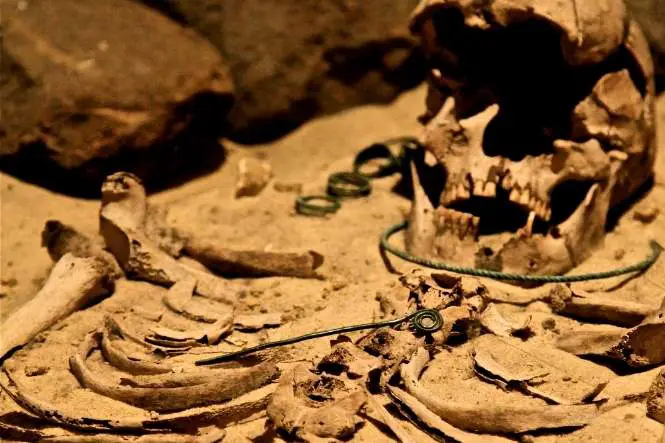Archaeology and anthropology are the study of historic human remains and the objects, buildings and other artefacts associated with them. Forensic archaeologists and anthropologists can apply the same techniques to crime scenes, to get evidence from human remains, as well as from drugs, guns or stolen goods found at crime scenes, whether recent or decades old.
Forensic Archaeology
A forensic archaeologist’s first involvement may be to help the police locate the site where a body and victim’s personal items, or stolen goods are buried, through geological and geophysical surveying techniques, as well as using imaging and photography.
The forensic archaeologist may also help with the excavation, using similar tools and expertise to those used at an archaeological dig. This has to be done slowly and painstakingly, and the archaeologists will record and preserve anything found at every stage and depth (for example paint flakes, hair, clothing or DNA) as it may be vital evidence. The colour and state of the soil may be useful in the investigation.
Forensic archaeologists can date items found in grave sites, including bones, using a range of techniques. Carbon dating can determine whether the grave site is recent or ancient.
Forensic archaeologists may be involved in the excavation of mass graves to produce evidence for war crimes trials, or in the collecting and collating of human remains and personal effects at mass fatalities, such as bomb or gas explosions, or plane crashes.
Evidence from forensic archaeologists about how materials degrade or decompose over time and in specific conditions is important, as this can help determine, for example, how long a body has been buried by the state of the clothes or the surrounding soil, or how long stolen goods have been buried by the subsequent damage to metal and other materials.
Forensic archaeologists may have to give evidence in court as an expert witness, and need to be able to communicate complex issues to a lay audience. They may also have to communicate with distressed and bereaved relatives.
Forensic Anthropology
Forensic anthropologists work with human skeletons or bodies that are unrecognisable (through burning, mutilation or mummification) in order to help identify individuals and discover the cause of death.
Forensic anthropologists can identify bones and fragments of bones, initially determining whether they are human or animal. The size and shape of the skeleton can help determine the race, sex, age height and build of the victim, and the bones can help determine the cause of death (accidental, intentional, or through disease), and whether any injury to the bones was before, during or after death (pre-, peri- or post-mortem).
Using computer techniques, forensic anthropologists can create faces from just skulls, which can help in identifying victims. This is based on the anatomy and physiology of bone and muscle, as well as artistic knowledge of human form, but may not be admissible as evidence.
Like many other branches of forensic sciences, forensic anthropologists may have to give evidence in court and speak with people who have lost a friend or member of their family.

